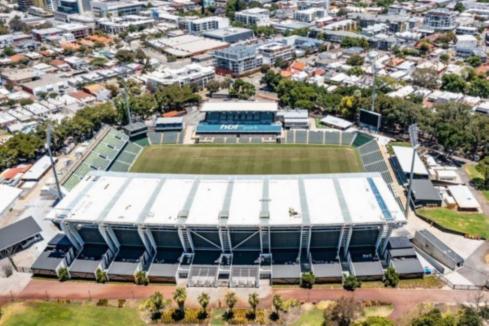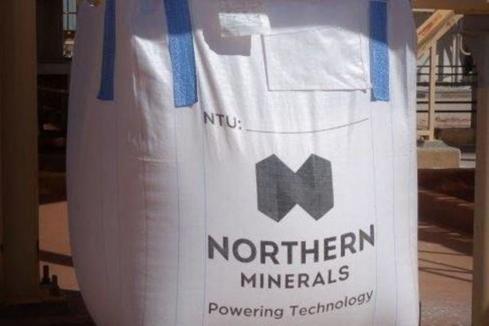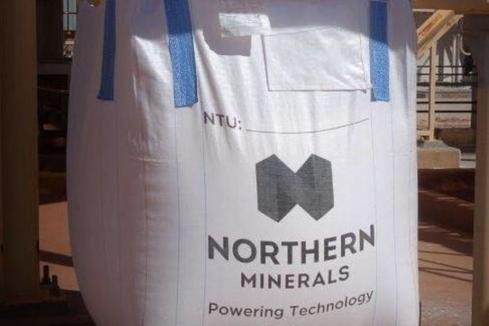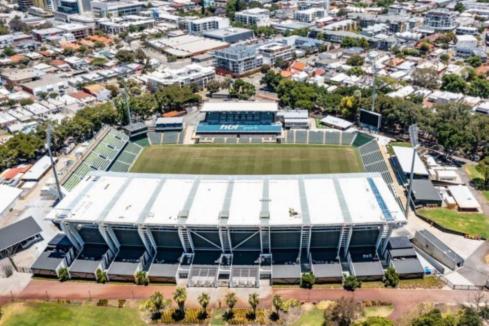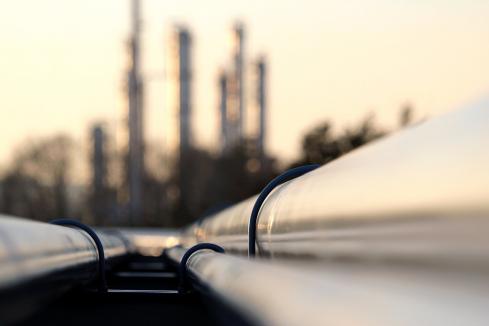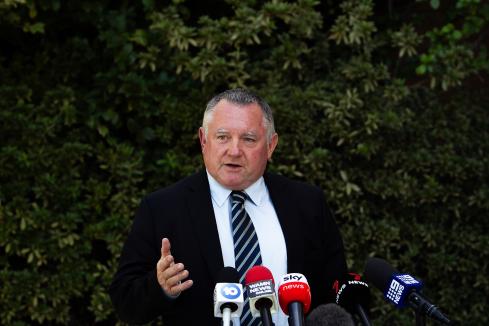Free to read: With WA’s exports to China approaching $100 billion annually, business leaders are considering how the state might create alternative opportunities in a volatile environment. Plus, click through for our podcast with Asian Engagement Minister Peter Tinley.


With WA’s exports to China approaching $100 billion annually, business leaders are considering how the state might create alternative opportunities in a volatile environment.
Western Australia exported more than $98 billion of merchandise to China in the 12 months to April 2020, more than the total to all other countries combined.
That’s up nearly 67 per cent on the corresponding period to April 2018, supported in part by a high iron ore price.
However, the past few months have highlighted some of the drawbacks of this successful relationship.
(click to view a full PDF version of this special report)
After the federal government called for an inquiry into the origins of (and early response to) COVID-19, China announced a tariff on Australian barley, a ban on beef from Queensland abattoirs (for safety reasons), and changes to inspection rules on iron ore shipments.
That has added to supply chain disruptions that emerged earlier this year as China entered lockdown.
These events have added fuel to calls for WA to diversify its trade relationships.
Diversification brings challenges, however, with businesses potentially needing to make trade-offs between the best returns and risk management.
Perth USAsia Centre chief executive Gordon Flake told Business News there were structural reasons why WA would need to look elsewhere for growth, including India and Indonesia.
That concern is partly driven by the ageing of China’s population.
“[China will be] the first country in the world to grow old before it grows rich,” Professor Flake said.
China’s statisticians reportedly expect the country’s population to peak by the end of the decade, and contract as much as 20 per cent by 2065.
Professor Flake said a large segment of China’s labour force was older than 50.
“There’s not a country in the world that’s been able to successfully alter the long-term decline in their fertility rate,” he said.
“I don’t know anybody who seriously looks at China, their demographics … that thinks the next 30 years will look like the last 30 years.”
Other challenges for China’s government included environmental impact and democratic legitimacy.
“I’m far more concerned about Chinese weakness than strength, and one person who agrees with me is [President] Xi Jinping,” Professor Flake said.
“The shift of China’s [policy] trajectory is born of anxiety.”
The Belt and Road Initiative was a good example, he said.
While there was much consternation about the program, through which China plans to invest up to $1 trillion into infrastructure across Asia, Europe and Africa, Professor Flake said China had been trying to drum up fanfare.
“There’s a real question about China’s ability to sustain that much offshoring of their investment resources,” he said.
Japanese foreign investment outflows outpaced China, Professor Flake said.
The world was likely to become multipolar more quickly, he said, meaning there would be numerous centres of geopolitical power in addition to the US, with China included among them.
For WA, there were several potential markets that should be prioritised, such as India and the group of 10 countries in the Association of Southeast Asian Nations, particularly Indonesia.
India was set to become the world’s most populous country, had a younger population than China, and had more upside for growth, Professor Flake said.
While the COVID-19 pandemic might delay development in India and Indonesia, the long-term fundamentals were good, he added.
In addition, Professor Flake said WA should think beyond just trying to sell products.
“We’ve got to deepen our engagement with their populations and culture,” he said.
“We need to get the best and brightest down here and get them to love Australia.”
Asian Engagement Minister Peter Tinley told Business News the state government had prioritised diversifying relationships, including through the the establishment of an Asian Engagement portfolio, the first of its kind in Australia.
Mr Tinley said businesses had accelerated their thinking about alternatives to China during the pandemic.
“Too often businesses get focused on singular markets, and the crisis has identified for some industries and some sectors the folly of that, and the need to always look for alternate customers,” he said.
“You cannot have a diversified economy without diversified markets.
“Lots of businesses are using the opportunity of the crisis to realign.”
The state’s relationships with China, Japan, and South Korea were strong, Mr Tinley said, so businesses would take the lead in those markets.
A priority for the government would be around emerging opportunities, he said.
The minister cited Austal and CBH Group as success stories in this regard, with shipbuilder Austal operating facilities in Vietnam and the Philippines.
“We have as a government the coordination and leadership responsibility that shines a light the private sector will follow,” Mr Tinley said.
“Particularly with Asian economies and governments; they like a government-to-government connection, the sub-national government connections WA has in Asia are strong.
“East Java ... our sister-state relationship is 30 years old; there’s a lot of evidence to support the activation of that.”
With the Indonesia-Australia Comprehensive Economic Partnership Agreement due to come into force in July, Mr Tinley said work on this relationship would step up.
“The free trade agreement is the start of the conversation, that’s a nation-to-nation agreement,” he said.
“The hard work really starts now.
“We need to work sector by sector … see where the match is and where the market is with Indonesia.”
Another focus would be attracting businesses from Europe and the US to move to, and invest in, WA, Mr Tinley said.
Here, proximity to Asia was a big plus.
Other competitive advantages included the skilled workforce, cheap energy and stability as a jurisdiction, he said.
While there may be popular sentiment in the community and media about transitioning Australia’s trade relationship away from China, PwC partner Andrew Parker cautioned it would not be easily replaced.
“The diversification discussion in some ways does not fully recognise the dynamics of what’s happening here,” Mr Parker told Business News.
“It was a sensible thing to be doing,” he said, but there would be a big challenge.
China was a large customer that wanted what Australia produced, so diversification should be about looking at other avenues for growth, rather than replacement.
“The strategy should be not China or, but China and,” Mr Parker said.
China would add more purchasing power in the decade ahead than the US, India and Indonesia combined, he said.
Mr Parker acknowledged China had a demographics problem, but India had its own challenges.
One optimistic forecast for Australia’s trade with India was in former Department of Foreign Affairs and Trade secretary Peter Varghese’s economic strategy for the market.
That document targeted tripling Australian exports to India by 2035, which Mr Parker said would be $45 billion annually.
At that level, it would still be much less than shipments to China.
“India, Indonesia … these will be important economies for Australia to focus on,” Mr Parker said.
“Vietnam is another one.
“But we shouldn’t be thinking those economies alone or together are a substitute for China.”
He said Australia also needed to be prepared for further trade disputes with China, following the recent barley and beef restrictions.
“There’s a very real risk that we haven’t seen the end of those kinds of conflicts,” Mr Parker said.
“We have to get used to this sort of conflict.”
However, he said history showed trade disputes between other countries and China had not reduced export growth.
Similarly, coal restrictions imposed in previous years had ultimately not led to a drop in Australian exports to China.
And for WA, the state’s success in handling COVID-19 would make it an even stronger contender for tourists and international students.
“If you’re a Chinese parent, would you be sending your kid to the US or UK at the moment?” Mr Parker asked.
“The opportunity for WA being so close to the region, having terrific products … [it] could come out of this in better shape than other states.”
Optimistic
Among those who remain optimistic about China is Australia China Business Council WA branch president Adam Handley, who is also a partner at law firm Minter Ellison.
“There are tensions at a national government to national government level,” Mr Handley said.
“From a WA level, the government has been taking the right approach, leaving national issues at a national level.
“A lot of WA businesses are spending effort to keep relationships with Chinese counterparts strong.”
Mr Handley said ACBC members were not talking about replacing relationships in the Chinese market but augmenting them in a ‘China Plus’ strategy.
Chinese businesses were doing the same, he said, including diversifying their manufacturing base into South-East Asia.
Mr Handley warned that pressure from some federal backbenchers for a more hawkish stance on China was unhelpful, particularly in an environment of capital flight.
“When I look at the COVID-19 [budget] deficit we’ll be left with in Australia, foreign investment plays a large part of an economic recovery,” he said.
Mr Handley said the Foreign Investment Review Board’s recent hardened stance on incoming investment, which resulted in some deals not proceeding, was wrongly perceived by some in China as targeted towards their country.
“That has a cooling effect on potential investments,” he said.
Squire Patton Boggs partner Chris Rosario said 2020 would be the year of diversification of foreign investment in WA.
“The circumstances with China, increased scrutiny by FIRB … the WA business community is looking at some of our other long-term partners,” he said.
South Korea and Japan would be good potential sources of capital to tap, Mr Rosario said, with deals not necessarily on worse terms.
“It depends what you’re looking for,” Mr Rosario told Business News.
“In the past five to 10 years, Chinese investors have had better bid prices.
“But the Japanese, the [South] Koreans will invest in long-term, strategic stakes.
“When all that has been focused on is price, some of those Japanese and [South] Korean investors have struggled to match those prices.”
Sentiment about the importance of price was shifting, he said.
Tony Chong, who is also a partner at Squire Patton Boggs, said Chinese investment inquiries had not stopped despite the challenges.
“They’re fully aware there’s a situation but it hasn’t stopped them,” Mr Chong said.
But he said there were additional hurdles to get through.
Looking more broadly than investment flows, Mr Chong supported the idea that India, and ASEAN countries such as Indonesia and the Philippines, should be priorities.
“We’re not doing enough [with India],” Mr Chong said.
“We always see that country as a whole as a call centre; there’s more to India than that.”
Governments would need to take the lead in developing these relationships, he said.
An example was the WA government’s 2017 sister-state deal with the Indian state of Andhra Pradesh.
Mr Chong said it was important in Asian markets to build relationships rather than think transactionally.
“From the Asian side of it, the relationship is fundamental,” he said.
“I’m yet to see one where the deal is done and it is successful without a relationship.”









